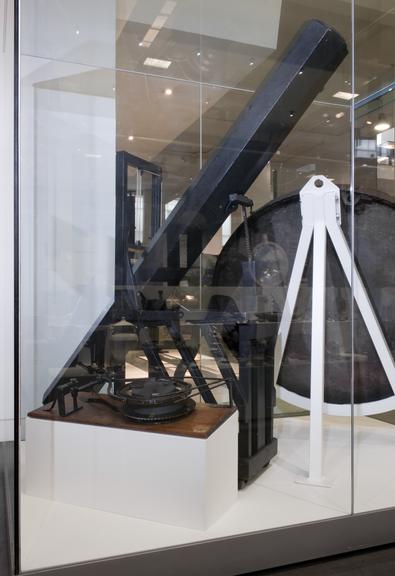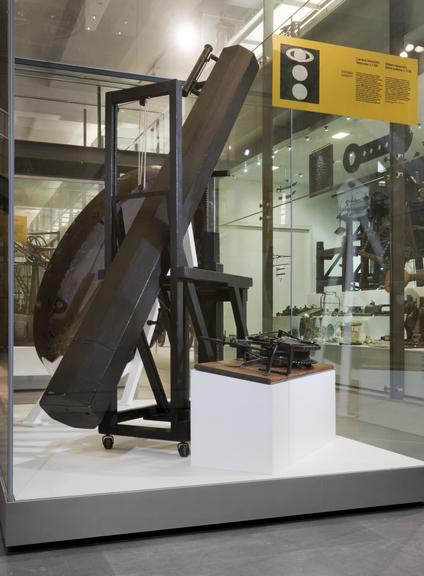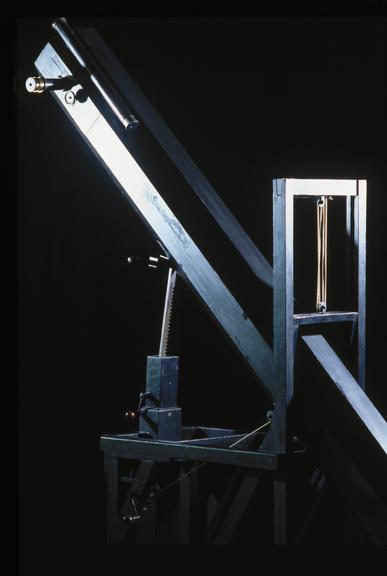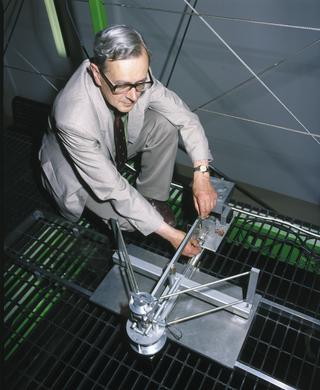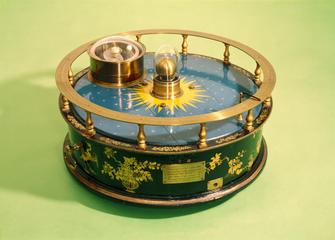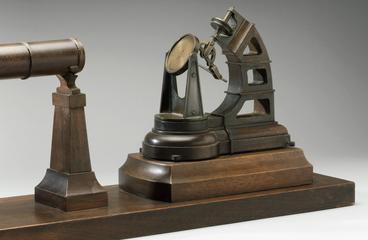Caroline Herschel's telescope, 1795-1816
Newtonian reflecting telescope with 6-inch diameter speculum mirror of 7-foot focal length with black painted deal tube and altazimuth stand plus accessories
More
Thought to have been assembled from optics and components made by Sir William Herschel for his sister Caroline Herschel around 1795 when they lived in Slough, England. Taken to Hanover in 1823 by Caroline and mounted there in its present form before being presented to the Royal Astronomical Society in 1840 by Sir John Herschel
Dated to the start of the nineteenth century, this reflecting telescope was made by the famous astronomer, William Herschel for his sister Caroline. She was William's lifelong observing assistant and an astronomer in her own right having discovered eight comets. Her telescope has a 7-foot wooden tube and stand that is operated using pulley ropes and gears. The heart of the telescope is a 6 1/8-inch mirror made of speculum metal, a bronze alloy with arsenic added for a more reflective surface. The instrument is made of painted deal a type of pine and is thought to be similar to the telescope that William Herschel used to discover the planet Uranus in 1781.
- Object Number:
- 1908-160 Pt1
- Image ©
- Science Museum Group Collection



